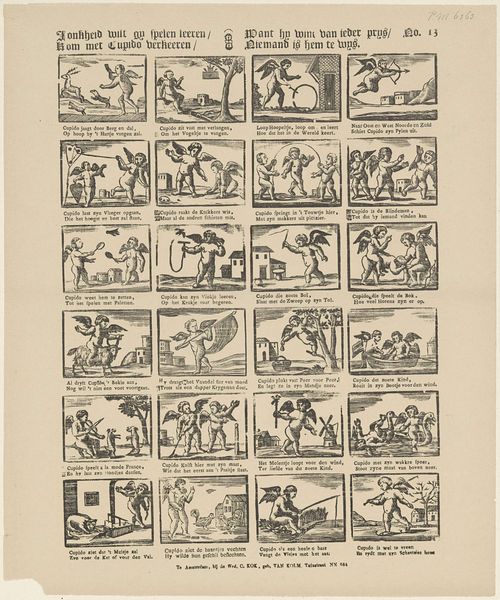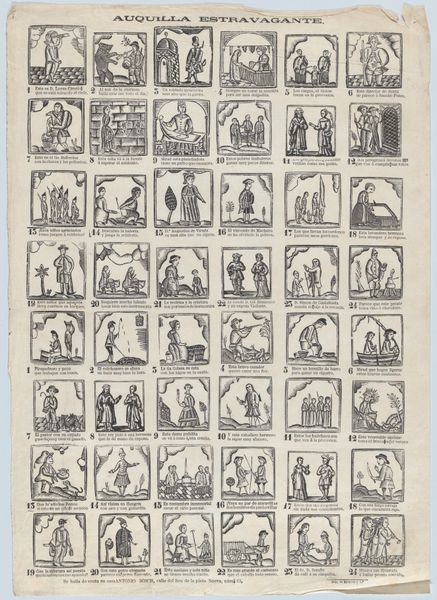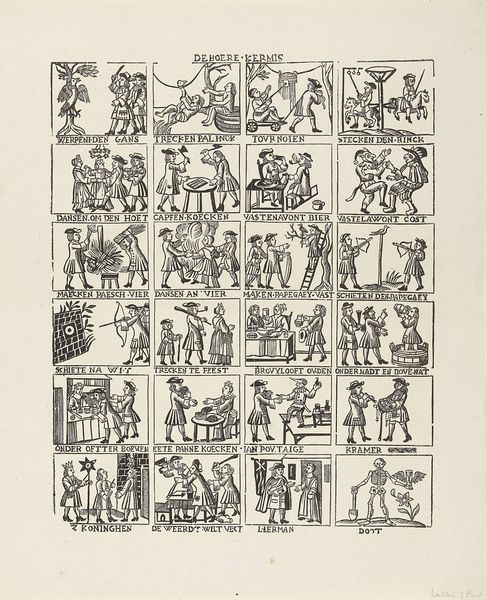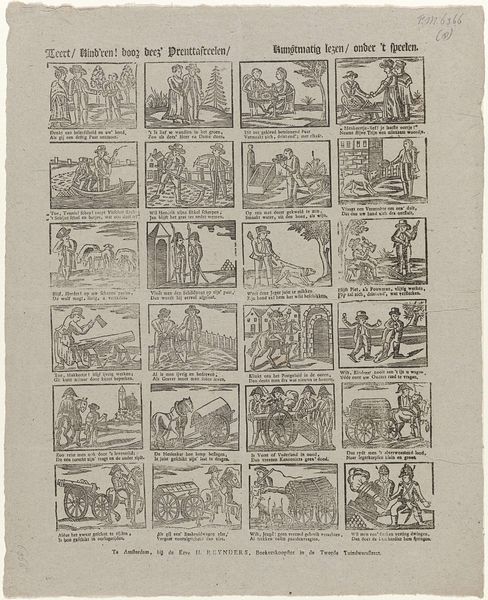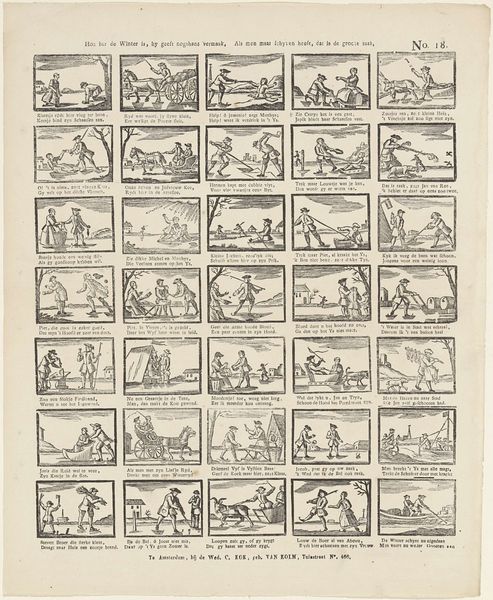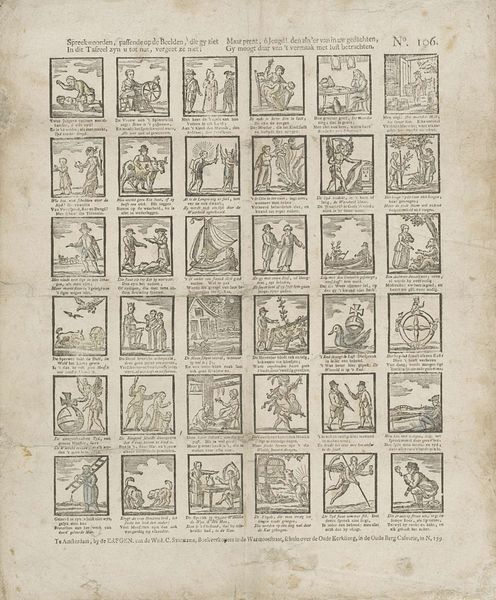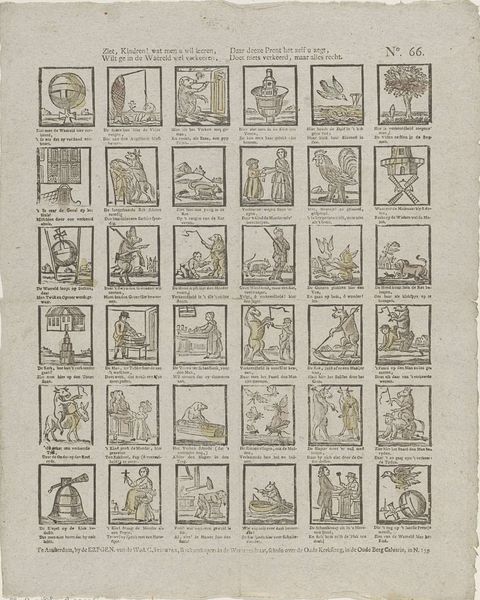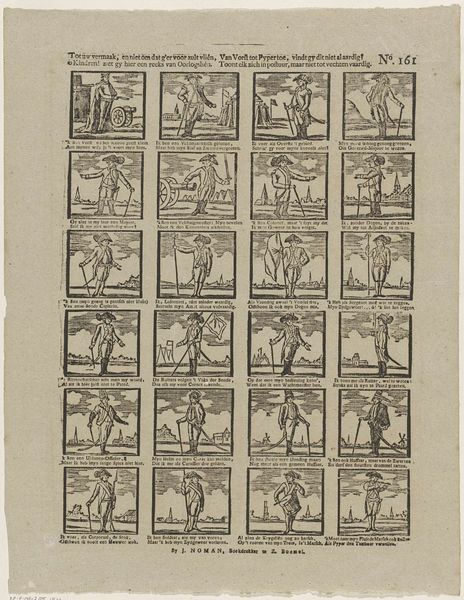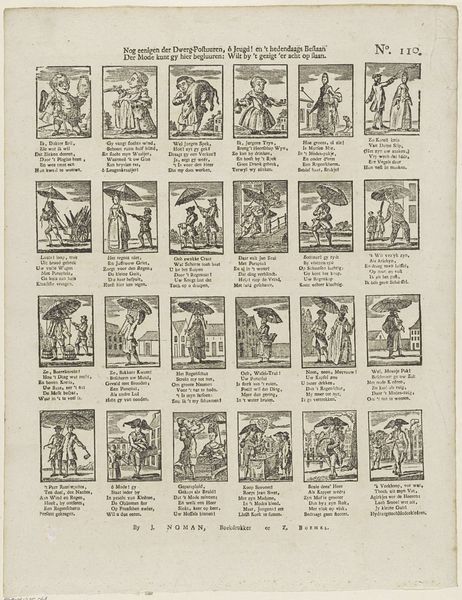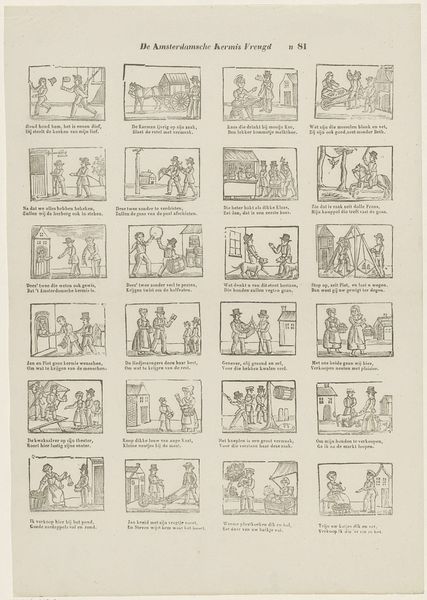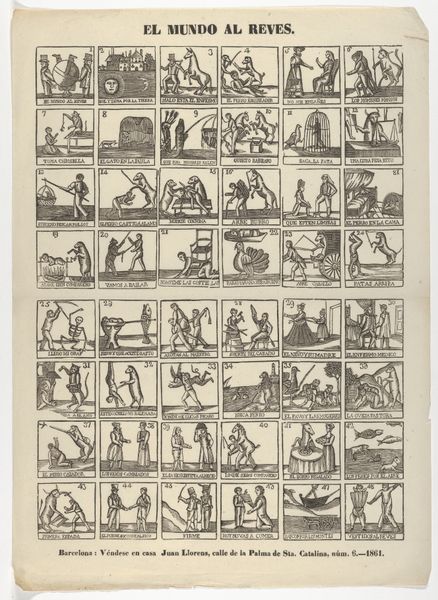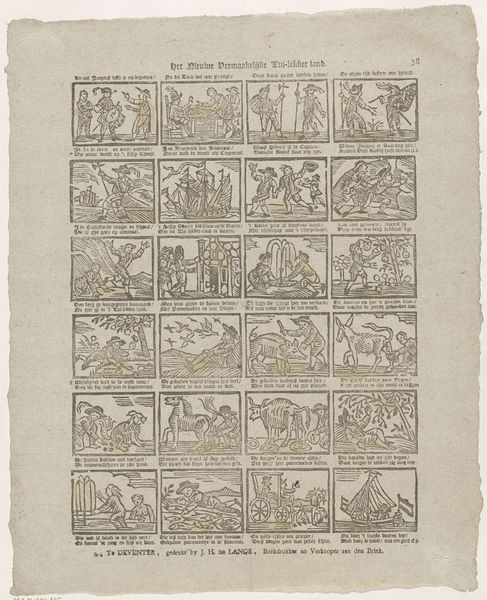
Ziet, Kindren! hier verschiet van veelerhande zaaken, / Waar mede gy uw oog en zinnen kunt vermaaken 1715 - 1813
0:00
0:00
ervenweduwecornelisstichter
Rijksmuseum
print, engraving
#
narrative-art
#
dutch-golden-age
# print
#
genre-painting
#
engraving
Dimensions: height 354 mm, width 300 mm
Copyright: Rijks Museum: Open Domain
Editor: This is "Ziet, Kindren! hier verschiet van veelerhande zaaken, / Waar mede gy uw oog en zinnen kunt vermaaken," a print—likely an engraving—dating from 1715 to 1813, now held at the Rijksmuseum. The work presents an array of small, almost vignette-like scenes. What I notice first is how each scene seems to capture a little narrative moment, frozen in time. What stands out to you, looking at this image? Curator: It's fascinating to see how such seemingly simple scenes are packed with social commentary. Consider the implications of showcasing daily life, not of nobility or grand events, but of everyday people. Who gets represented, and how? Notice the diversity of activities—some show labor, others leisure, some interaction, some solitude. Each carefully chosen scene offers a perspective, suggesting values and hierarchies of the period. Editor: So, beyond just depicting life, it subtly comments on social structures? I see what you mean; even in these little frames, there's a sense of who’s visible and valued. Is there a specific scene here that speaks most strongly to this idea? Curator: The scenes involving children, for instance, provoke reflection. The title literally addresses them. Are they being educated, entertained, or subtly indoctrinated with societal norms through this print? Consider who had access to such materials, and what lessons these images might impart. Look at the different roles assigned, and ask who benefits. It offers insight into the cultural lens through which people were taught to understand the world. Editor: I never thought of it that way! It really makes you consider who this was created for, and what messages it sends. It’s much more layered than just a depiction of everyday life. Curator: Precisely! It's a powerful example of how art, even in its most unassuming forms, is never neutral. It either challenges or reinforces power structures. It is through interrogating pieces like these that art's societal function is better appreciated and understood.
Comments
No comments
Be the first to comment and join the conversation on the ultimate creative platform.
